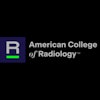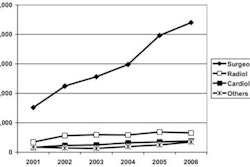Dear AuntMinnie Member,
Despite recent headlines on healthcare reform, for the most part radiologists are well off. They are among the highest-paid medical specialists (a recent survey put the median salary of U.S. radiologists at nearly half a million dollars a year), and most enjoy an enviable level of independence as owner-operators of radiology groups and imaging centers.
But the rise of a start-up imaging services company from California has many radiologists wondering if the good times could be coming to an end. Imaging Advantage of Santa Monica has developed a business model that could threaten radiology's traditional employment paradigm, turning radiologists from entrepreneurs who run their own practices into salaried employees who work for hospitals and imaging services companies.
It's a future that's anathema to some radiologists, and they've seized on a recently signed contract between Imaging Advantage and an Ohio hospital as a rallying point. Find out what all the fuss is about by clicking here for an article by contributing writer Alexandra Weber Morales in our Imaging Center Digital Community.
AECL delay
In other news, nuclear medicine practitioners may have to wait even longer before normal supplies of molybdenum-99m (Mo-99) are restored. Atomic Energy of Canada (AECL) said yesterday that it will not be able to resume normal operations at the nuclear reactor that produces much of North America's Mo-99 supply until late in 2009. Find out why by clicking here.
Gadolinium and NSF
Finally, our MRI Digital Community is featuring a story this week by features editor Wayne Forrest that explores the relationship between gadolinium-based MRI contrast media and nephrogenic systemic fibrosis (NSF).
A recent study by researchers from the Mayo Clinic in Jacksonville, FL, found that the use of gadolinium contrast -- even at high doses -- doesn't necessarily trigger the development of NSF. In fact, researchers found that NSF was relatively rare in their patient population, with just one case reported. Learn more by clicking here.
In other MRI news, find out how 3-tesla MRI is helping to more accurately diagnose a severe form of endometriosis, and how MR angiography might be a better call than CT angiography for following Kawasaki disease.
These stories and more are available in the MRI Digital Community at mri.auntminnie.com.



















